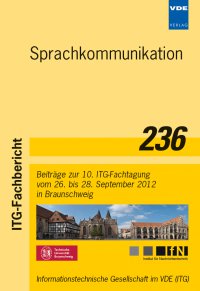Loudness-Based Level Correction of Audio Entertainment Signals in Automotive Environments
Conference: Sprachkommunikation - Beiträge zur 10. ITG-Fachtagung
09/26/2012 - 09/28/2012 at Braunschweig, Deutschland
Proceedings: Sprachkommunikation
Pages: 4Language: englishTyp: PDF
Personal VDE Members are entitled to a 10% discount on this title
Authors:
Hess, Wolfgang (Fraunhofer Institute of Integrated Circuits IIS, Audio Department, Am Wolfsmantel 33, 91058 Erlangen, Germany)
Zeller, Michael (Intel Corporation, Automotive Solutions Division, Emmy-Noether-Str. 9, 76131 Karlsruhe, Germany)
Abstract:
Information and entertainment signals presented through a vehicle's sound system are superposed by environmental noises. Consequently, a mixture of dynamically changing audio signals and dynamically changing noises is received by the listener's ears in the car cabin. In addition to this variant character of signal-to-noise ratio - making audibility and speech intelligibility extremely difficult - today's vehicle infotainment systems offer the capability to reproduce a wide variety of entertainment signal sources. As a result, signals fed to the infotainment system through the air, by cable, or by data storage media feature wide ranges of input levels and dynamic compressions. Additionally, human perception of loudness is not linearly dependent on level. Elaborate methods are necessary for comfortable listening in cars, ensuring no need of continuous re-adjusting of volume settings. This paper presents an approach to solve these issues by dynamical alignment of sound signals to an average loudness, depending on surrounding noises and input audio signal loudness. The method guarantees all audio signals being presented within a loudness corridor while preserving the dynamics of music. Only gain is adjusted, since signal analysis and alignment is done in full band processing. As a result no spectral coloration or dynamic compression artefacts are generated by the algorithm; a computationally cheap implementation was realized, as also depicted in [1] and [2]. This work was performed at the department "Center of Competence Multimedia", Harman/Becker Automotive Systems, Karlsbad, Germany.


